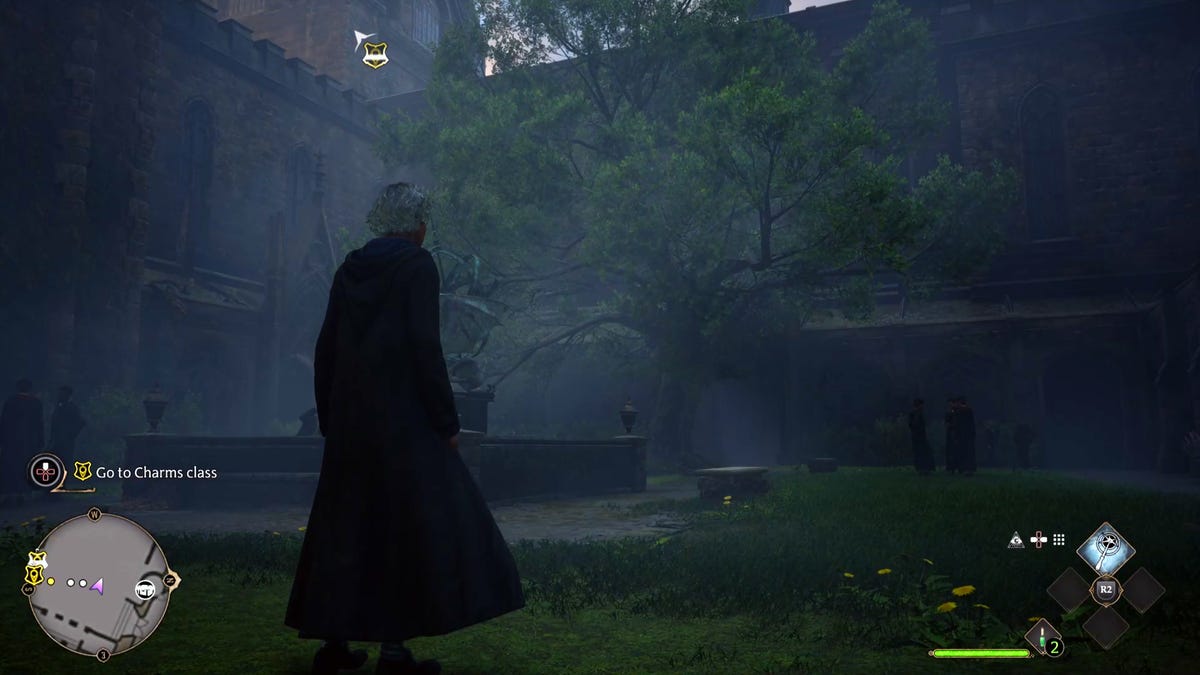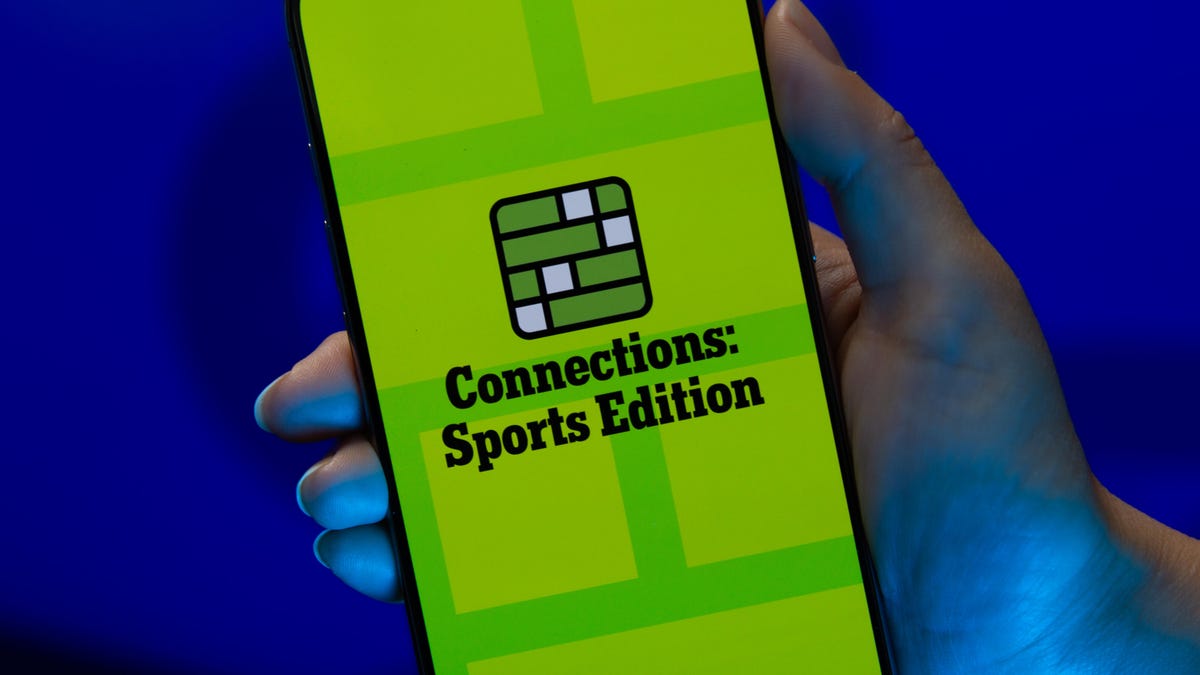Technologies
Hogwarts Legacy: The Best PS5 and Xbox Graphics Options
The new Harry Potter game can have up to five separate graphics preset options.

While PC games often have endless menus and submenus of graphics settings to tinker with, console games have historically run the same way for everyone on the same hardware. More recently, as consoles have diverged into multiple versions, such as the PS4/PS4 Pro or the Xbox Series X/Series S, you might get a choice between Quality and Performance modes (typically emphasizing either resolution or frames-per-second), but that’s about it.
In Hogwarts Legacy, however, the Xbox and PS5 versions of the game have up to five available graphics settings. That’s more than the usual Quality/Performance split, and the details of each can be a bit opaque. That’s especially true considering one of the big selling points of console gaming is that you don’t have to worry about settings or compatibility issues.
Which one to pick depends on a couple of things – your preference for sparkly eye candy over smooth motion, and whether or not you have a TV that supports VRR (variable refresh rate) and HDR.
As a quick rundown, Hogwarts Legacy’s five graphics settings are:
- Fidelity mode
- Fidelity mode with raytracing
- Performance mode
- Balanced mode
- HFR (high frame rate) mode
The question comes down to: Do you want the game to look better or run smoother? Quality settings, called Fidelity in this case, in console games generally increase the resolution and add graphics detail and complexity, but often lock the number of frames per second down to 30. Performance settings can drop the resolution and remove or downgrade graphics features, but offer higher frame rates, ideally at least 60fps — but not always. Newer TVs with higher refresh rates (or variable refresh rates) can run even faster frame rates.
In testing Hogwarts Legacy, it’s not surprising that I ended up on the Balanced setting. It feels like a shame to skip the high-end graphics the PS5 (and Xbox Series X) are capable of. But at the same time, playing at 30fps feels choppy and unsatisfying. Hence, the in-the-middle option.
I’ve also been spoiled by testing the game on a series of high-end gaming PCs. On the new Razer Blade 18, which has an Nvidia RTX 4080 GPU, I was able to run the game at its highest graphics settings with QHD resolution and get frame rates above 100fps in most cases.
Even an slightly older gaming laptop with an Nvidia RTX 3070 was able to run at a mostly consistent 60fps at high graphics settings and FHD resolution. Both of these cases, when connected to a 65-inch LG OLED TV, were far superior visually to any of the PS5 options and didn’t require me to choose graphics quality over frame rate.
What do all these performance mode settings actually do?
As Hogwarts Legacy is mostly exploration and conversation with some fighting, you can get away with the Fidelity mode and not feel like you’re losing out on gameplay. Fast-paced action or online competitive games generally require those higher frame rates for effective play.
Adding the ray tracing option tweaked the visuals slightly on the PS5, most noticeably adding more realistic reflections. But it also seemed to further degrade performance. It’s worth checking out, but you might not stick with it.
Besides the Balanced setting, the Performance setting is also somewhere in the middle. It drops some detail from Balanced, but feels like it hits 60fps more consistently without the occasional slowdown in the Balanced mode.
The extreme option on the other end is HFR Performance, which maximizes the frame rate but makes the game look worse. Again, a casual adventure/exploration game like this doesn’t need anything over ~60fps, and only some TVs even support this.
What performance setting should I choose for Hogwarts Legacy?
For my money, if playing on a PS5, I’d choose the Balanced mode, but only after sampling the other available options as well. My second choice would be Fidelity mode, and in fact, I might switch back and forth between the two depending on my mood.
But the overall best experience is going to be on a gaming PC, and our breakdown of the required specs for that is here.
Technologies
Today’s NYT Connections: Sports Edition Hints and Answers for Nov. 29, #432
Here are hints and the answers for the NYT Connections: Sports Edition puzzle for Nov. 29, No. 432.

Looking for the most recent regular Connections answers? Click here for today’s Connections hints, as well as our daily answers and hints for The New York Times Mini Crossword, Wordle and Strands puzzles.
It’s Rivalry Saturday, so Connections: Sports Edition gives a big game a nod with two caregories. If you’re struggling with today’s puzzle but still want to solve it, read on for hints and the answers.
Connections: Sports Edition is published by The Athletic, the subscription-based sports journalism site owned by The Times. It doesn’t appear in the NYT Games app, but it does in The Athletic’s own app. Or you can play it for free online.
Read more: NYT Connections: Sports Edition Puzzle Comes Out of Beta
Hints for today’s Connections: Sports Edition groups
Here are four hints for the groupings in today’s Connections: Sports Edition puzzle, ranked from the easiest yellow group to the tough (and sometimes bizarre) purple group.
Yellow group hint: Fire it on in there.
Green group hint: Buckeyes.
Blue group hint: Wolverines.
Purple group hint: Not double.
Answers for today’s Connections: Sports Edition groups
Yellow group: Baseball pitching feats.
Green group: Associated with Ohio State.
Blue group: Associated with Michigan.
Purple group: Triple ____.
Read more: Wordle Cheat Sheet: Here Are the Most Popular Letters Used in English Words
What are today’s Connections: Sports Edition answers?
The yellow words in today’s Connections
The theme is baseball pitching feats. The four answers are immaculate inning, no-hitter, perfect game and shutout.
The green words in today’s Connections
The theme is associated with Ohio State. The four answers are dotting the I, gray, scarlet and The Horseshoe.
The blue words in today’s Connections
The theme is associated with Michigan. The four answers are blue, Hail to the Victors, maize and The Big House.
The purple words in today’s Connections
The theme is triple ____. The four answers are A, crown, double and play.
Technologies
Today’s NYT Mini Crossword Answers for Saturday, Nov. 29
Here are the answers for The New York Times Mini Crossword for Nov. 29.

Looking for the most recent Mini Crossword answer? Click here for today’s Mini Crossword hints, as well as our daily answers and hints for The New York Times Wordle, Strands, Connections and Connections: Sports Edition puzzles.
Need some help with today’s Mini Crossword? It’s Saturday, so it’s a long one. Read on for all the answers. And if you could use some hints and guidance for daily solving, check out our Mini Crossword tips.
If you’re looking for today’s Wordle, Connections, Connections: Sports Edition and Strands answers, you can visit CNET’s NYT puzzle hints page.
Read more: Tips and Tricks for Solving The New York Times Mini Crossword
Let’s get to those Mini Crossword clues and answers.
Mini across clues and answers
1A clue: Hockey disks
Answer: PUCKS
6A clue: Signature headwear for Mr. Monopoly
Answer: TOPHAT
7A clue: Seedy establishment?
Answer: NURSERY
8A clue: Bioweapon at the center of a 2001 envelope scare
Answer: ANTHRAX
9A clue: Cleverly skillful
Answer: ADROIT
10A clue: Sleeping enclosure for a pet dog
Answer: CRATE
11A clue: Picks up the tab
Answer: PAYS
Mini down clues and answers
1D clue: Play, as a film character
Answer: PORTRAY
2D clue: Ultimate consequences
Answer: UPSHOTS
3D clue: Sweetheart, in French
Answer: CHERIE
4D clue: 24-___ gold
Answer: KARAT
5D clue: River in which Achilles was dipped (except for his heel!)
Answer: STYX
6D clue: Frozen landscape
Answer: TUNDRA
7D clue: Civil rights org. co-founded by W.E.B. Du Bois
Answer: NAACP
Don’t miss any of our unbiased tech content and lab-based reviews. Add CNET as a preferred Google source.
Technologies
Repair Your Electronics at Home With This Rare Black Friday Discount on the iFixit Pro Tech Go Toolkit
This toolkit rarely goes on sale, so take advantage of this opportunity to snag it for only $40.

While Black Friday is an excellent time to replace old smartphones or broken laptops at a discount, not everyone is looking to splurge on new tech right now. If you’re shopping on a budget, or simply like the devices that you have and aren’t ready for an upgrade, investing in an electronics repair kit may be a wise option. We’ve spotted a discount on the iFixit Pro Tech Go tech toolkit, bringing its price down to just $40. But don’t delay, Black Friday is in its final hours and this kit rarely goes on sale.
The iFixit Pro Tech Go kit can be used to open up and repair a wide range of electronics, including smartphones, laptops, gaming consoles, and smart home devices for DIY repairs like battery or screen replacements. The kit has a 32-bit Moray driver kit, an opening tool, a suction handle, a jimmy, a spudger and angled tweezer to carefully open your devices.
Don’t miss any of our unbiased tech content and lab-based reviews. Add CNET as a preferred Google source.
Repairing your own tech can save you hundreds or even thousands of dollars. It also reduces e-waste by helping your devices last longer rather than throwing them away over minor issue. As of this year, all 50 states have introduced right-to-repair legislation designed to give people a legal right to fix their own tech, and several states have already signed it into law.
You can check out more deals from iFixIt now on Amazon. Plus, for other budget buys, check out our roundup of the best Black Friday deals under $100.
MOBILE DEALS OF THE WEEK
-
$749 (save $250)
-
$475 (save $175)
-
$499 (save $300)
-
$900 (save $400)
Why this deal matters
This is a record low price on a repair kit that rarely goes on sale. While we did see a modest discount on the iFixit Pro Tech Go toolkit during Amazon Prime Day in July, it was not marked down for October Prime Day or other sales such as Memorial Day or Labor Day. As such, it’s fairly unlikely that we’ll see it go on sale again this season, so this might be your last chance to get the toolkit for only $40.
Join Our Daily Deals Text Group!
Get hand-picked deals from CNET shopping experts straight to your phone.
By signing up, you confirm you are 16+ and agree to receive recurring marketing messages at the phone number provided. Consent is not a condition of purchase. Reply STOP to unsubscribe. Msg & data rates may apply. View our Privacy Policy and Terms of Use.
-

 Technologies3 года ago
Technologies3 года agoTech Companies Need to Be Held Accountable for Security, Experts Say
-

 Technologies3 года ago
Technologies3 года agoBest Handheld Game Console in 2023
-

 Technologies3 года ago
Technologies3 года agoTighten Up Your VR Game With the Best Head Straps for Quest 2
-

 Technologies4 года ago
Technologies4 года agoBlack Friday 2021: The best deals on TVs, headphones, kitchenware, and more
-

 Technologies4 года ago
Technologies4 года agoVerum, Wickr and Threema: next generation secured messengers
-

 Technologies4 года ago
Technologies4 года agoGoogle to require vaccinations as Silicon Valley rethinks return-to-office policies
-

 Technologies4 года ago
Technologies4 года agoOlivia Harlan Dekker for Verum Messenger
-

 Technologies4 года ago
Technologies4 года agoiPhone 13 event: How to watch Apple’s big announcement tomorrow
